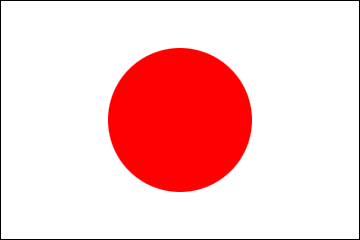JET Programme Series: A Quiet Life in the Japanese Inaka - Tikira Beresford
2021/2/19
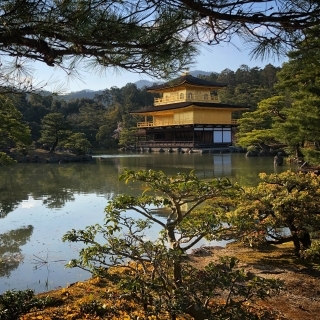
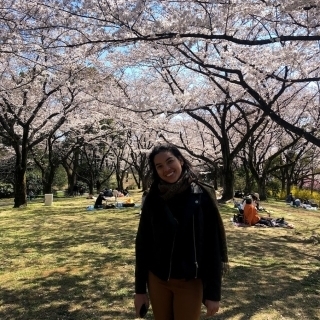
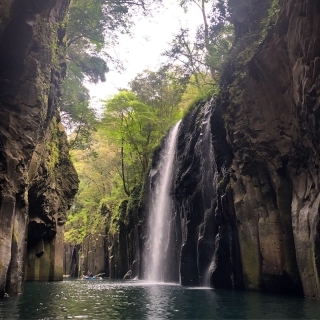
JET Programme Series: A Quiet Life in the Japanese Inaka - Tikira Beresford
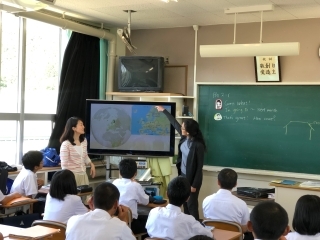
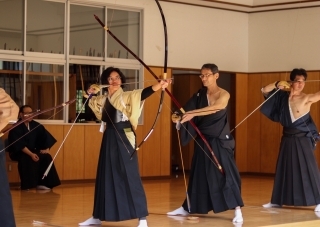
Where is your weight? Are you leaning forward? Are your shoulders level? Is the arrow level? Is your elbow drawn back enough? Are you pushing into the bow in the right direction? Inhale. Exhale. Release. Plunk. “Yosh!”
Practising kyuudo, Japanese archery, provided an insight into underlying elements of Japanese tradition and culture. I wonder if others around me had had a similar internal dialogue. It certainly did not look like it. All that is seen from the outside is grace and purposefulness. If any part of the body leaves your awareness, the arrow will not go where you want. You see this level of attentiveness in people’s daily lives, especially in service. It is a bit different with younger people, but most Japanese do not walk and eat, and they do not text and cross the street. They are mindful, deliberate and do everything with an attention for beauty.
For two years I lived in Saikai City, Nagasaki. Don’t be fooled by the word “city” here, Saikai is considered inaka or countryside– a small town nestled amongst the hills, known for its citrus fruit, and perfectly placed between Nagasaki City and Sasebo City. For me, Saikai was the ideal place to experience a peaceful Japanese lifestyle with scenes of misty hills in the early morning, tiny islands scattered on the sea, and the fishermen’s boats bobbing on the water just outside their family’s home. Naturally, such a place has the freshest fish you could want. Of course, being from Tobago this is no foreign concept, however, I now have a deeper appreciation for enjoying that fresh fish raw, as sashimi. I could write this entire piece about Japanese food, but I shall refrain. Let’s just say that there is much room for growth when it comes to Japanese cuisine available in T&T, and I look forward to seeing it happen. If you travel around Japan, you’ll notice that each prefecture is proud of its own traditions, festivals and foods. If you visit Nagasaki, for instance, people will make sure that you try champon, a Nagasaki-born noodle dish inspired by the cuisine of China. Most unique about Nagasaki, aside from its tragic history, is the fact that its port was the only open to foreign countries during the isolation period in Japan. This has given the city an edge on cultural exposure, and you can see the influence of Portugal, The Netherlands and China. I also had the opportunity to visit the big must-see cities: Tokyo, Kyoto, and Osaka. I would recommend Kyoto to any traveller for classic Japanese beauty and traditional experiences. Additionally, there are rich experiences waiting in any rural town. I was lucky to have a little kei car, and to go on road trips to the other prefectures of Kyushu island. The highlights of those trips would have to be the Takachiho gorges, seeing massive koi swimming alongside the streets of Shimabara, parks filled with cherry blossoms in the spring and numerous hikes and waterfalls. Of the many reasons to love Japan, I fell in love with the nature the most. In the south, it is warm enough for flora and fauna similar to ours in T&T, yet cool enough for pine trees by the beaches and fresh strawberries from your neighbour.
Once the pandemic started, and travel was limited, I appreciated the life I had built in Saikai even more. There is no anonymity for a foreigner in a small town, but I was welcomed everywhere with warm bows. I had made a few friends and met their families, practised kyuudo every week and played volleyball every Friday with the grannies in my town. Though I did not live there, I spent a lot of time with the Yukinoura community, a village in Saikai progressive in organic farming, tourism and all things rich in culture. There I got my vegetables and brown rice, co-hosted a Christmas dinner, played live music with other musicians, and camped at my favourite spot by the river. At the mention of camping, my coworkers would ask incredulously if I was not afraid of inoshishi, or wild boars. I found this question amusing and quite interesting. Without doubt the most incredible aspect of my entire experience in Japan, was the freedom to do these things alone. I could go for a walk along the beach in the late evening, close my eyes and meditate, even fall asleep if wanted. I was safe. This feeling of safety took a year to relax into, because it is not something I had ever felt before; it is not a feeling that most Trinbagonian women have ever felt before. Once, on a clear night, I did indeed sleep on the beach alone. I awoke to the sound of voices and a flash of familiar fear. Then I remembered where I was, saw that the men on their morning run seemed to take no notice of me, and I closed my eyes again. Just the gentle sloshes of the shoreline, the cool damp sand, the smell of salt, and no fear– a drop of wise caution perhaps, but no fear. So the answer is no– I am not nearly as afraid of wild boars as I am of men.
In Japan I learned that as a natural being, it is reasonable to want to be at peace in nature; I learned when to plant and harvest rice and how to pound it into mochi at New Years; I learned to say “Ganbare” instead of “Good luck” because it encourages the person to do their best and not just leave it to chance; I learned that we should pour our neighbour’s drink; I learned that there are several ways to say thank you; and I learned how to peel a mikan (portugal) skin into a perfect flower, because why not take the time to do everything with beauty?
JET Programme Series: A Quiet Life in the Japanese Inaka (Japanese Embassy Facebook)
JET Programme Series Archives
Practising kyuudo, Japanese archery, provided an insight into underlying elements of Japanese tradition and culture. I wonder if others around me had had a similar internal dialogue. It certainly did not look like it. All that is seen from the outside is grace and purposefulness. If any part of the body leaves your awareness, the arrow will not go where you want. You see this level of attentiveness in people’s daily lives, especially in service. It is a bit different with younger people, but most Japanese do not walk and eat, and they do not text and cross the street. They are mindful, deliberate and do everything with an attention for beauty.
For two years I lived in Saikai City, Nagasaki. Don’t be fooled by the word “city” here, Saikai is considered inaka or countryside– a small town nestled amongst the hills, known for its citrus fruit, and perfectly placed between Nagasaki City and Sasebo City. For me, Saikai was the ideal place to experience a peaceful Japanese lifestyle with scenes of misty hills in the early morning, tiny islands scattered on the sea, and the fishermen’s boats bobbing on the water just outside their family’s home. Naturally, such a place has the freshest fish you could want. Of course, being from Tobago this is no foreign concept, however, I now have a deeper appreciation for enjoying that fresh fish raw, as sashimi. I could write this entire piece about Japanese food, but I shall refrain. Let’s just say that there is much room for growth when it comes to Japanese cuisine available in T&T, and I look forward to seeing it happen. If you travel around Japan, you’ll notice that each prefecture is proud of its own traditions, festivals and foods. If you visit Nagasaki, for instance, people will make sure that you try champon, a Nagasaki-born noodle dish inspired by the cuisine of China. Most unique about Nagasaki, aside from its tragic history, is the fact that its port was the only open to foreign countries during the isolation period in Japan. This has given the city an edge on cultural exposure, and you can see the influence of Portugal, The Netherlands and China. I also had the opportunity to visit the big must-see cities: Tokyo, Kyoto, and Osaka. I would recommend Kyoto to any traveller for classic Japanese beauty and traditional experiences. Additionally, there are rich experiences waiting in any rural town. I was lucky to have a little kei car, and to go on road trips to the other prefectures of Kyushu island. The highlights of those trips would have to be the Takachiho gorges, seeing massive koi swimming alongside the streets of Shimabara, parks filled with cherry blossoms in the spring and numerous hikes and waterfalls. Of the many reasons to love Japan, I fell in love with the nature the most. In the south, it is warm enough for flora and fauna similar to ours in T&T, yet cool enough for pine trees by the beaches and fresh strawberries from your neighbour.
Once the pandemic started, and travel was limited, I appreciated the life I had built in Saikai even more. There is no anonymity for a foreigner in a small town, but I was welcomed everywhere with warm bows. I had made a few friends and met their families, practised kyuudo every week and played volleyball every Friday with the grannies in my town. Though I did not live there, I spent a lot of time with the Yukinoura community, a village in Saikai progressive in organic farming, tourism and all things rich in culture. There I got my vegetables and brown rice, co-hosted a Christmas dinner, played live music with other musicians, and camped at my favourite spot by the river. At the mention of camping, my coworkers would ask incredulously if I was not afraid of inoshishi, or wild boars. I found this question amusing and quite interesting. Without doubt the most incredible aspect of my entire experience in Japan, was the freedom to do these things alone. I could go for a walk along the beach in the late evening, close my eyes and meditate, even fall asleep if wanted. I was safe. This feeling of safety took a year to relax into, because it is not something I had ever felt before; it is not a feeling that most Trinbagonian women have ever felt before. Once, on a clear night, I did indeed sleep on the beach alone. I awoke to the sound of voices and a flash of familiar fear. Then I remembered where I was, saw that the men on their morning run seemed to take no notice of me, and I closed my eyes again. Just the gentle sloshes of the shoreline, the cool damp sand, the smell of salt, and no fear– a drop of wise caution perhaps, but no fear. So the answer is no– I am not nearly as afraid of wild boars as I am of men.
In Japan I learned that as a natural being, it is reasonable to want to be at peace in nature; I learned when to plant and harvest rice and how to pound it into mochi at New Years; I learned to say “Ganbare” instead of “Good luck” because it encourages the person to do their best and not just leave it to chance; I learned that we should pour our neighbour’s drink; I learned that there are several ways to say thank you; and I learned how to peel a mikan (portugal) skin into a perfect flower, because why not take the time to do everything with beauty?
JET Programme Series: A Quiet Life in the Japanese Inaka (Japanese Embassy Facebook)
JET Programme Series Archives
